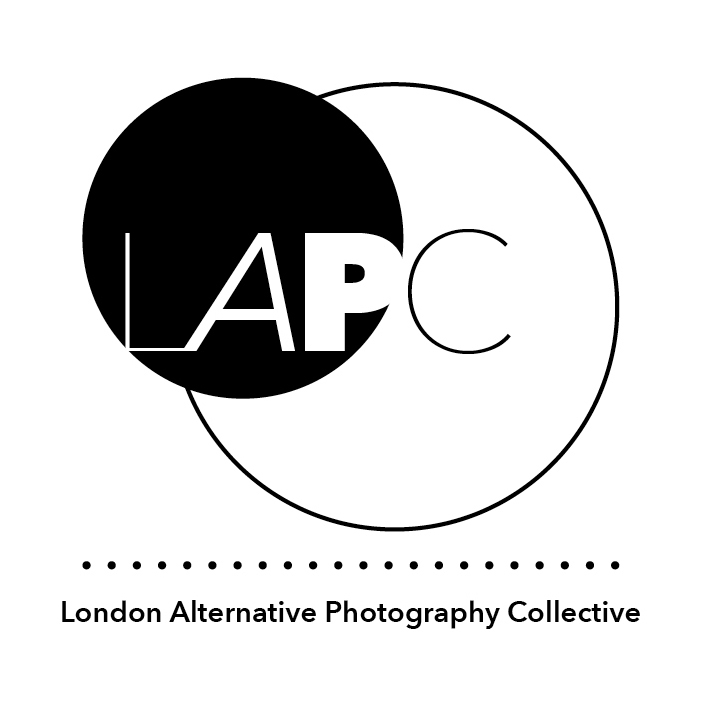Photographic Processes Library
The production of our video library and our new website have been generously funded by The National Lottery Heritage Fund.
The Wet Collodion Process
LAPC codirector, Almudena Romero, demonstrates the wet collodion process as a commission on permanent display at Victoria and Albert Museum New Photography Centre.
The wet collodion process was developed by English sculptor Frederick Scott Archer around 1852. Archer realised that combining the best qualities of the earlier daguerreotype and calotype processes he could create a technique that made sharp yet reproducible images from glass negatives.
Anthotype #4” by Sir John Herschel. Photograph from 1839 .“The Royal Prisoner” © Humanities Research Center, The University of Texas at Austin.
The Anthotype Process
Discovered by Sir John Herschel in 1842 in this process an emulsion is made from crushed flower petals, plants, fruit or vegetables. Then, a sheet of paper is coated with the emulsion and dried. Before exposing the coated paper to full direct sunlight objects are placed on the top of the paper, for example a transparent photo. The parts of the coated paper not covered by the objects on top will bleach out, while colour will remain in the shadowed parts.
Herschel did an extensive research on how to make photographic images from flowers and tried several plant emulsions. This was published on the paper On the Action of the Rays of the Solar Spectrum on Vegetable Colours, and on some new Photographic Processes, which you can read by clicking on this link.
His research also included how juices from flowers, leaves of plants and dyeing substances react not only to light but also to heat, moisture and chemical agents, and he found that moisture accelerated the process.
On an earlier paper, Herschel described the process of trying to speed up the bleaching action of the vegetable juices by isolating specific rays of the spectrum. He isolated rays using a prism and found that the action differed with different coloured rays, for example, red light bleaches blue tints. This was published in his 1840 paper to the Philosophical Transactions of the Royal Society called On the Chemical Action of the Rays of the Solar Spectrum on Preparations of Silver and other Substances, both metallic and non-metallic, and on some Photographic Processes, vol. 131 (1840), pp. 1-59, which you can read on this link.
The long exposures of the anthotype process made it impractical and many photography pioneers preferred other techniques. However, Herschel exhibited a print called Photograph made with the juice of the petals of Mathiola annua, double ten-weeks stock at the Royal Society on June 16, 1842.
You can also read more about the history of this process at alternativephotography.com
The Chlorophyll Printing and the Starch Dyeing processes.
Both the chlorophyll and the starch dyeing process relate to the history of using natural materials, such as leaves, to produce a print. This tradition further developed in the 19th century incorporating photography as a means to record nature. There are countless examples and techniques that mix photography, drawing, and other disciplines to produce this type of nature prints, including photogenic drawings, electroplates and other processes that would sometimes involve reducing the leaves to their skeletons, like Edward Parrish's describes in his book The Phantom Bouquet, some other times photo-collage techniques.
You can see here a step by step video to practice the chlorophyll printing process or follow this hand out to do your own experiments with the starch dyeing process.
Unknown photographer
A portrait of Estelle Rosenfeldt of Chillicothe, Ohio on a leaf. Carte de visite. 1860s (ca). Private collection of Robert Yoskowitz. From http://www.luminous-lint.com
Face of Christ superimposed on an oak leaf by Johann Carl Enslen in 1839, collections of The Royal Photographic Society Collection.
Magnolia glauca. Edward Parrish, The Phantom Bouquet. From The Guardian article Impressions of Nature.
Photogenic drawings
“Photogenic drawing was William Henry Fox Talbot’s name for the results of his first cameraless photographic process which he announced in 1839. In its simplest form a smooth high quality sheet of writing paper was immersed in a solution of table salt and then dried. Talbot brushed the paper with a solution of silver nitrate. This combined with the salt to produce silver chloride which is light sensitive. Small objects such as leaves and lace could then be placed on the paper and exposed to sunlight. This produced a light image of the object against a dark background; in other words, a negative image. “ From the V&A website. Click here to read more.
Leaf study, photograph by Calvert Richard Jones, 1840. . © Victoria and Albert Museum, London






